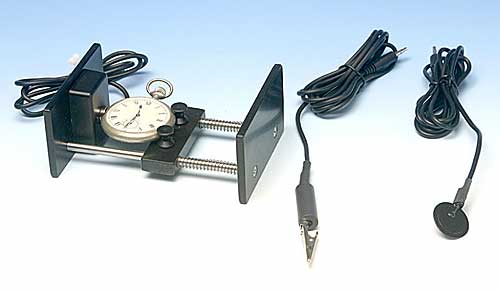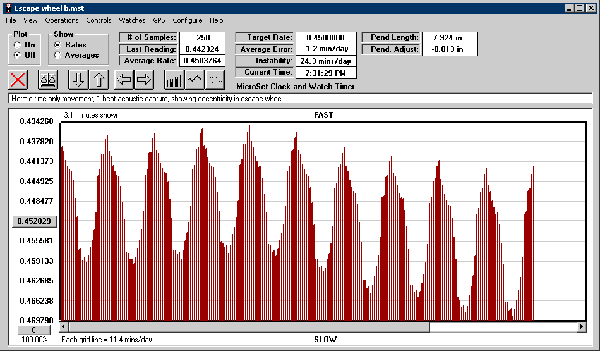|
Measuring Clocks and Watches
Acoustic Sensors Pros
Cons
The obvious interface between a clock or watch and a timing circuit is a microphone that listens to the tick sound of the escapement. The acoustic sensors used in watch timers aren’t microphones as you think of them though, they’re piezoelectric materials that generate an electric charge in response to vibration. This charge is amplified by the timer to measure ticks of the watch. This photograph shows a few of the acoustic sensors we make to measure clocks and watches.
Acoustic sensors are easy to use and are commonly used in the repair trade. They’re uniquely able to measure certain characteristics of a clock or watch. For example, a clockmaker often needs to set the clock in beat, meaning that the left and right ticks of the clock or watch are of equal duration. This can only be done with an acoustic sensor, which listens to the escapement. There are other details of the escapement that can be analyzed with acoustic sensors. If the timer is configured to measure every other beat, it measures the time it takes the same pallet to strike each escape wheel tooth one after another. If these readings are captured and displayed on a personal computer, you can see characteristics of the escape wheel. The tick time from one tooth to the next should be the same. But they rarely are. This measurement is sensitive enough to show flaws in every escape wheel I’ve ever looked at. This graph shows such a measurement on a new Hermle movement. Each tall red line represents a beat that was fast, a short red line represents a beat that was slow. You can easily see a repeating pattern in the data. The pattern repeats every 25 samples because the escape wheel has 25 teeth. Each red line measures a different escape wheel tooth. This escape wheel is particularly eccentric and the data reveals that, measured at the escape wheel, this clock speeds up and slows down by a rate change of over an hour per day with every rotation of the escape wheel. |

